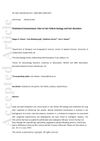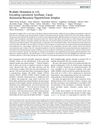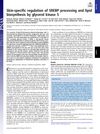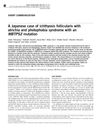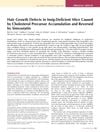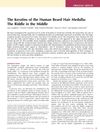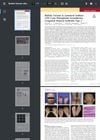Mutations in SREBF1, Encoding Sterol Regulatory Element Binding Transcription Factor 1, Cause Autosomal-Dominant IFAP Syndrome
July 2020
in “
American journal of human genetics
”
SREBF1 Sterol Regulatory Element Binding Transcription Factor 1 IFAP syndrome SREBP1 proteolytic cleavage nuclear translocation transcriptional activity cholesterol biosynthesis fatty acid biosynthesis keratin genes keratinocyte apoptosis lipid metabolism sterol homeostasis skin abnormalities sparse hair photophobia SREBP signaling cholesterol treatments lipid treatments
TLDR Changes in the SREBF1 gene cause a rare genetic skin and hair disorder.
The study identified mutations in the SREBF1 gene, which encodes the Sterol Regulatory Element Binding Transcription Factor 1, as the cause of autosomal-dominant IFAP syndrome. Researchers found three heterozygous mutations in 11 unrelated individuals, which impaired the proteolytic cleavage of SREBP1, preventing its nuclear translocation and reducing its transcriptional activity. This led to downregulation of genes involved in cholesterol and fatty acid biosynthesis, as well as keratin genes, and increased keratinocyte apoptosis. These disruptions in lipid metabolism and sterol homeostasis contributed to the clinical manifestations of IFAP syndrome, including skin abnormalities, sparse hair, and photophobia. The study highlighted the essential role of SREBP signaling in skin and hair health and suggested potential therapeutic interventions involving cholesterol or lipid treatments.
